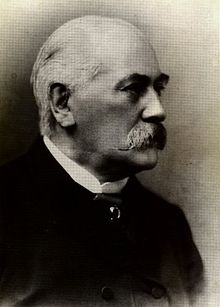Brugsch Papyrus

The Brugsch Papyrus (Pap. Berl. 3038), also known as the Greater Berlin Papyrus, or simply Berlin Papyrus[1] is an important ancient Egyptian medical papyrus. It was discovered by Giuseppe Passalacqua in Saqqara, Egypt. Friedrich Wilhelm IV of Prussia acquired it in 1827 for the Berlin Museum, where it is still housed. The style of writing is that of the 19th dynasty, and it is dated between 1350 and 1200 BC.
The papyrus was studied initially by Heinrich Karl Brugsch, but was translated and published by Walter Wreszinski in 1909. Only a German translation is available.
The papyrus contains twenty-four pages of writing. Much of it is parallel to the Ebers Papyrus. Some of the contents deals with contraception and fertility tests.[2]
Some historians believe that this papyrus was used by Galen in his writings.
References
- ^ John Francis Nunn, Ancient Egyptian Medicine. University of Oklahoma Press, 2002, p. 25 & 37. ISBN 0-8061-3504-2. Following Nunn, the Berlin Papyrus is "sometimes known as the Papyrus Brugsch" (p. 37).
- ^ John Francis Nunn, Ancient Egyptian Medicine. University of Oklahoma Press, 2002, p. 37-38. ISBN 0-8061-3504-2
Bibliography
- Wreszinski, Walter: Der grosse medizinische Papyrus des Berliner Museums (Pap. Berl. 3038). J. C. Hinrichs, 1909
- John Francis Nunn, Ancient Egyptian Medicine. University of Oklahoma Press, 2002. ISBN 0-8061-3504-2
- Attention: This template ({{cite pmid}}) is deprecated. To cite the publication identified by PMID 8885101, please use {{cite journal}} with
|pmid=8885101instead.
